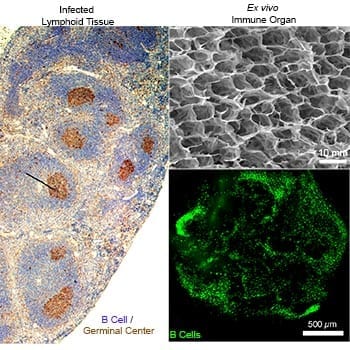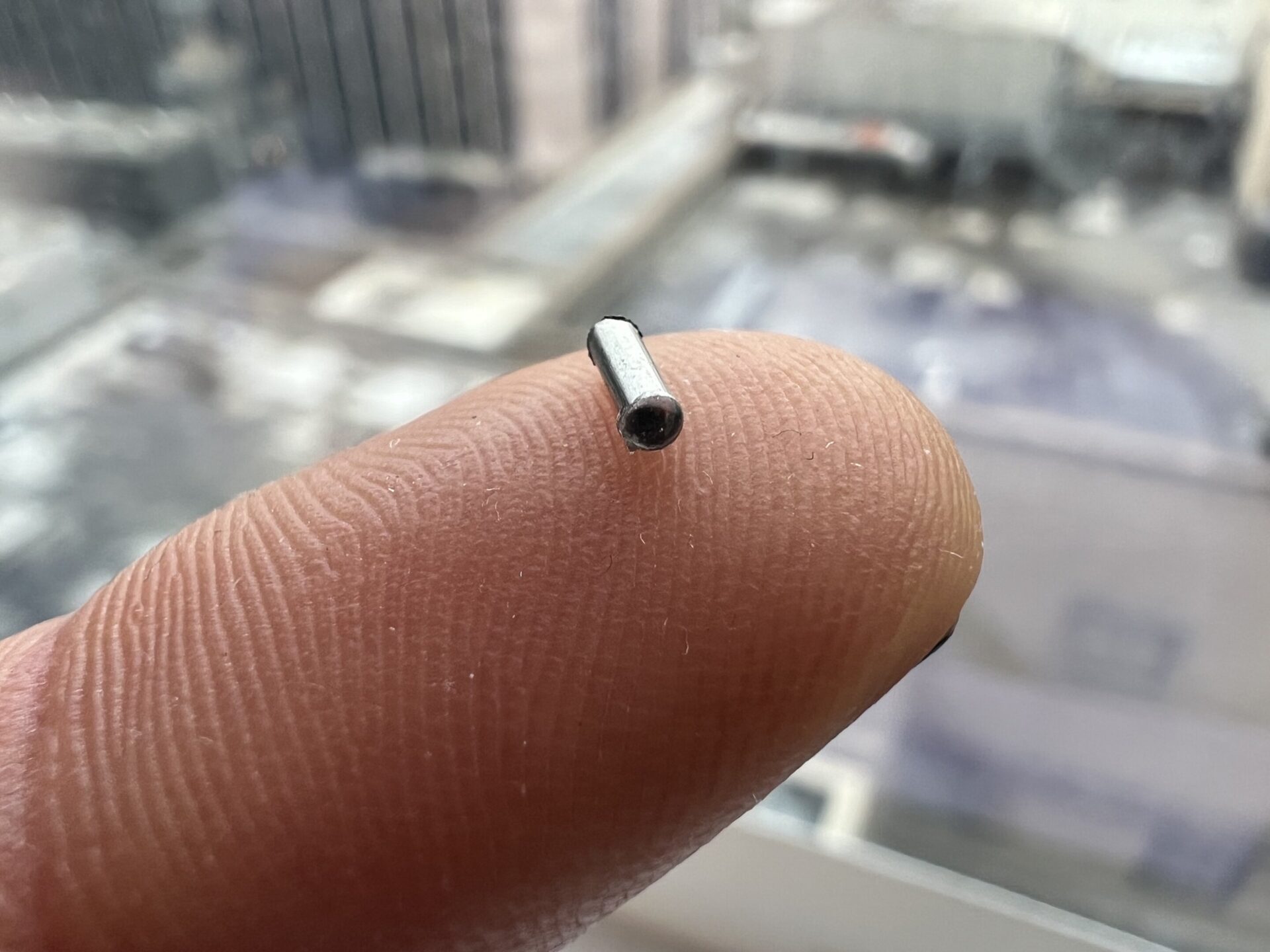
Cornell engineers have created a functional, synthetic immune organ that produces antibodies and can be controlled in the lab, completely separate from a living organism. The engineered organ has implications for everything from rapid production of immune therapies to new frontiers in cancer or infectious disease research.
The immune organoid was created in the lab of Ankur Singh, assistant professor of mechanical and aerospace engineering, who applies engineering principles to the study and manipulation of the human immune system. The work was published online June 3 in Biomaterials and will appear later in print.
The synthetic organ is bio-inspired by secondary immune organs like the lymph node or spleen. It is made from gelatin-based biomaterials reinforced with nanoparticles and seeded with cells, and it mimics the anatomical microenvironment of lymphoid tissue. Like a real organ, the organoid converts B cells – which make antibodies that respond to infectious invaders – into germinal centers, which are clusters of B cells that activate, mature and mutate their antibody genes when the body is under attack. Germinal centers are a sign of infection and are not present in healthy immune organs.
The engineers have demonstrated how they can control this immune response in the organ and tune how quickly the B cells proliferate, get activated and change their antibody types. According to their paper, their 3-D organ outperforms existing 2-D cultures and can produce activated B cells up to 100 times faster.
The immune organ, made of a hydrogel, is a soft, nanocomposite biomaterial. The engineers reinforced the material with silicate nanoparticles to keep the structure from melting at the physiologically relevant temperature of 98.6 degrees.
The organ could lead to increased understanding of B cell functions, an area of study that typically relies on animal models to observe how the cells develop and mature.
What’s more, Singh said, the organ could be used to study specific infections and how the body produces antibodies to fight those infections – from Ebola to HIV.
“You can use our system to force the production of immunotherapeutics at much faster rates,” he said. Such a system also could be used to test toxic chemicals and environmental factors that contribute to infections or organ malfunctions.
Read more: Engineers’ synthetic immune organ produces antibodies
The Latest on: Immune therapies
[google_news title=”” keyword=”Immune therapies” num_posts=”10″ blurb_length=”0″ show_thumb=”left”]
via Google News
The Latest on: Immune therapies
- Undiagnosed Immune Deficiency Rising Among Indian Children: Doctorson April 28, 2024 at 4:00 am
Undiagnosed immune deficiency is significantly rising among children under the age of five in India, said doctors here on ...
- Experts develop immune-enhancing therapies to target tuberculosison April 26, 2024 at 3:10 pm
Experts are working on novel immune-enhancing therapies called host-directed therapies to use the body's own immune system to target tuberculosis, with hopes that they could tackle even the ...
- Immune cells play a bigger role in high blood pressure than previously thought, opening doors for new treatmentson April 25, 2024 at 11:34 pm
A review in Nature Reviews Nephrology presents the association between immune cells and the development of hypertension, suggesting potential new therapeutic targets to mitigate the disease by ...
- Experts developing immune-enhancing therapies to target tuberculosison April 25, 2024 at 5:00 pm
Some immune-enhancing therapies already exist, and their use could be investigated while other immunomodulatory drugs specific to different sub-groups of TB disease are being developed Experts are ...
- Tumor cells evade the immune system early on: Newly discovered mechanism could significantly improve cancer immunotherapieson April 24, 2024 at 4:04 pm
Tumors actively prevent the formation of immune responses by so-called cytotoxic T cells, which are essential in combating cancer. Researchers have now uncovered for the first time how this exactly ...
- How mRNA Is Rewriting the Rules of Cancer Treatmenton April 24, 2024 at 2:24 pm
MIT spinout Strand Therapeutics has developed a new class of mRNA molecules that can sense where they are in the body, for more targeted and powerful treatments. What if training your immune system to ...
- Page settingson April 24, 2024 at 1:50 pm
In this study, researchers employed single-cell RNA sequencing on cardiac immune cells from heart failure patients (ischemic cardiomyopathy and dilated cardiomyopathy) undergoing heart transplantation ...
- Immune cells on standby are constantly stimulated by healthy tissue, new study findson April 24, 2024 at 8:29 am
When pathogens invade the body, the immune system must react immediately to prevent or contain an infection. But how do our defense cells stay ready when no attacker is in sight?
- Aspirin boosts immune response against colon cancer, study showson April 24, 2024 at 7:02 am
Tissue samples from aspirin users showed less cancer spread to the lymph nodes, and more aggressive activity of immune cells against tumors, the researchers said. In the lab, they discovered that ...
- Aspirin Helps the Immune System Fight Canceron April 23, 2024 at 8:20 am
The findings may offer a complementary mechanism for preventing the development and progression of various cancers.
via Bing News










